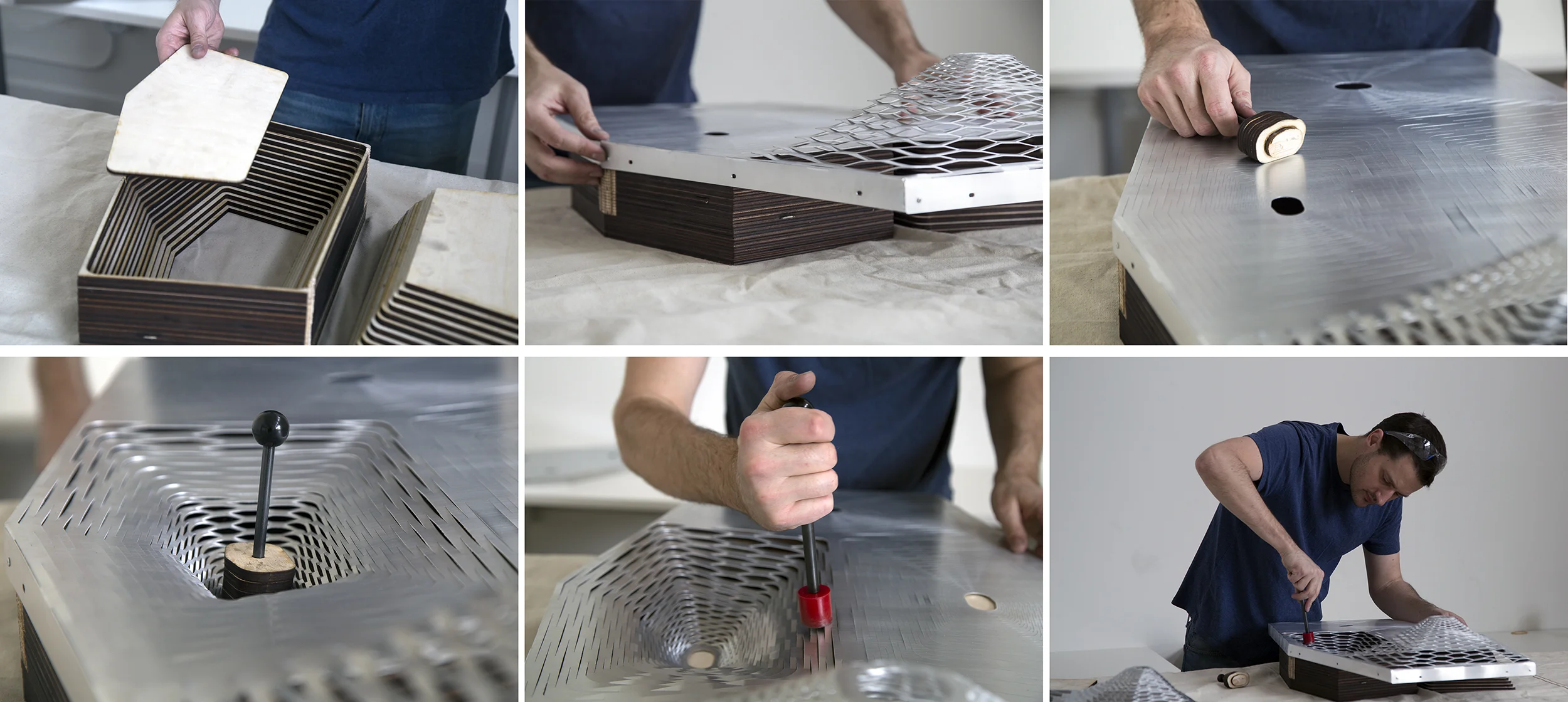The word cielo translates to sky, ceiling, canopy, or heavens in Spanish and Italian. It is also used to describe clouds and other atmospheric elements. Clouds have both a visual weight and a sense of buoyancy. They create atmosphere in both the literal and figurative senses, establishing microclimates of light, heat, and moisture while also setting a mood for the areas under and around them. This atmosphere is constantly in flux, often imperceptibly, creating an environment that is both dynamic and soothing.
Cielo is constructed primarily of custom expanded aluminum, created by cutting slits in a carefully arranged pattern on a flat sheet, then applying force to form it into a three-dimensional volume. When a flat sheet gets expanded, it creates a volumetric lattice consisting of hundreds of tiny folds, which gives the expanded volume great strength in multiple directions. This is a zero waste process in which no material is discarded (in contrast to a perforated sheet, which wastes material and weakens the sheet). Structure, volume, and opening are all interdependent.
Designed and fabricated as part of the Autodesk Pier 9 Artist in Residence (AiR) program.
For a detailed description of the process of making Cielo, visit Instructables.
Credits
Special thanks to Autodesk Pier 9 Artist in Residency team: Noah Weinstein, Vanessa Sigurdson, Paolo Salvagione, and Sherry Wong.
Pier 9 shop staff: Scott Kildall, Josh Myers, Gabrielle Patin, J. Sassaman, Mei-Yen Shipek, Trent Still, and Mary Elizabeth Yarbrough
Pier 9 collaborators: Amy Karle, Cy Keener, Scott McIndoe, Alex Reed, and Cheng Xu




